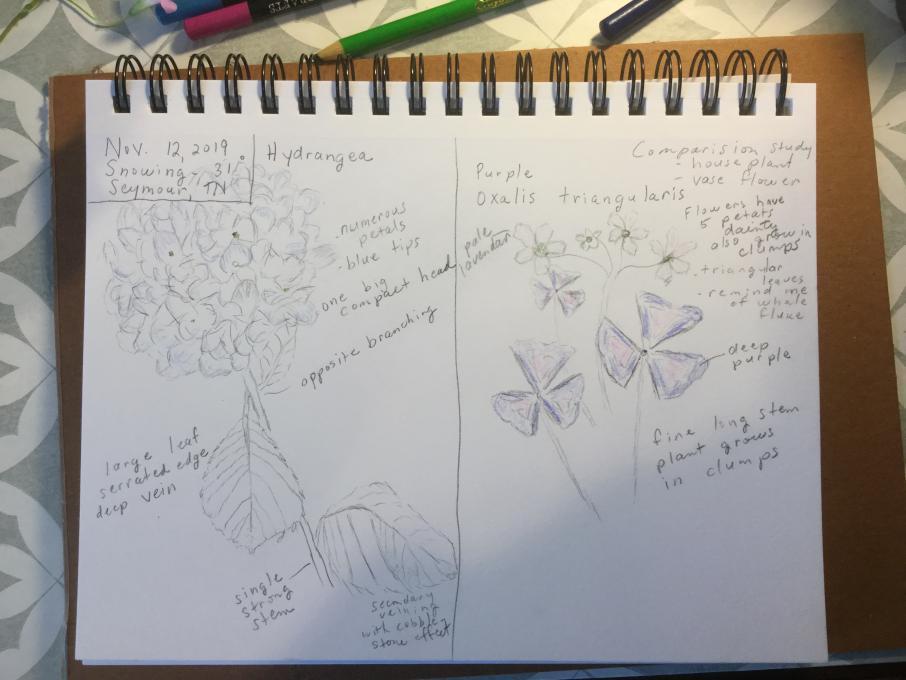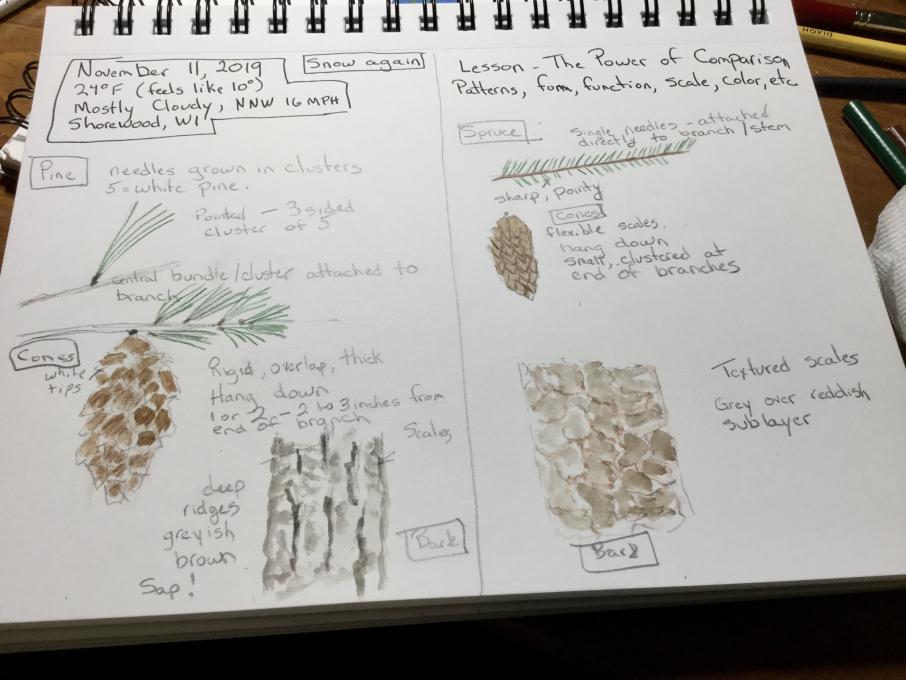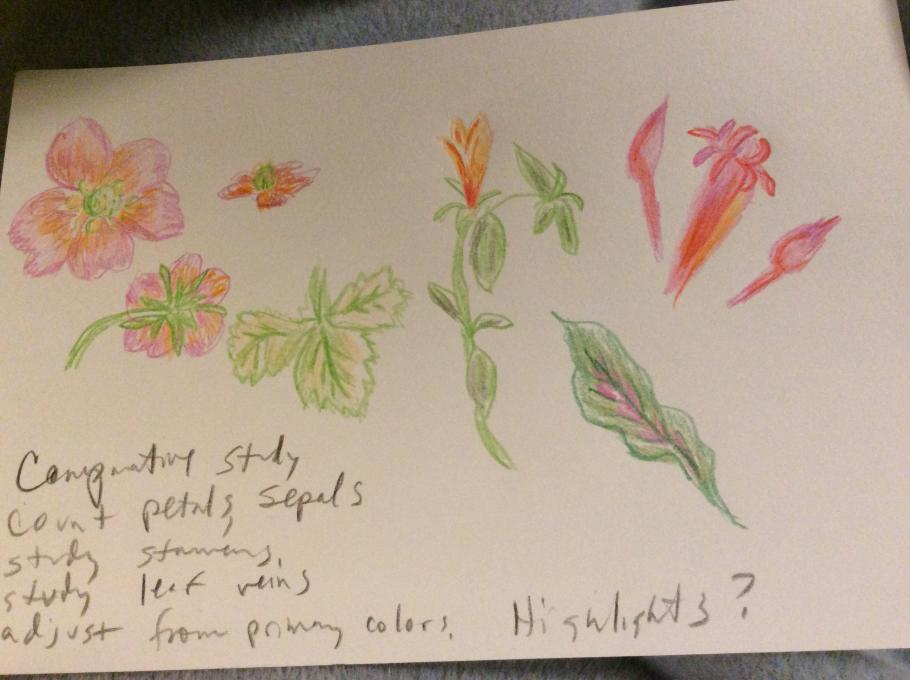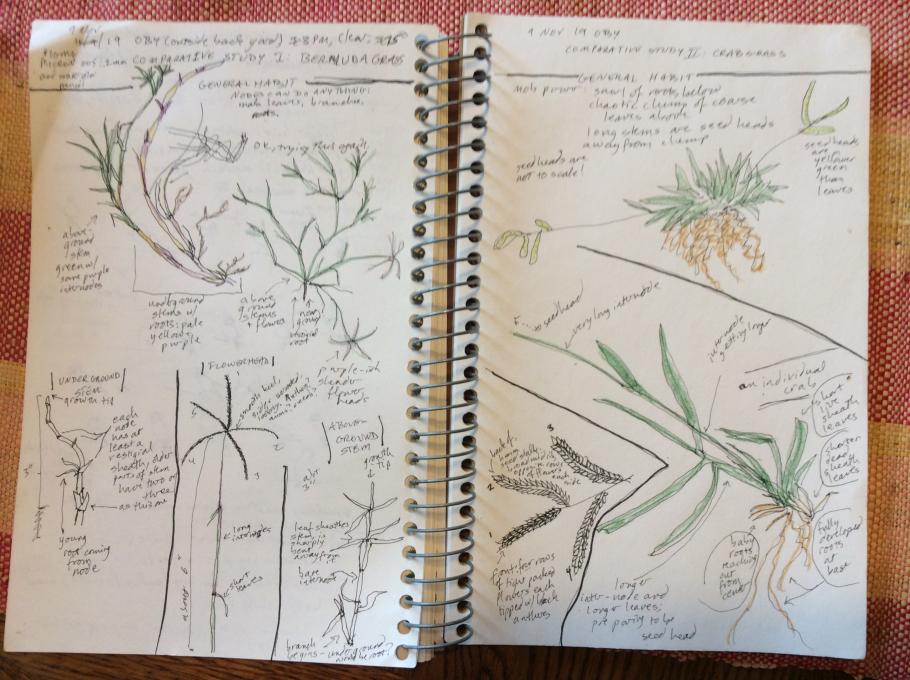The Cornell Lab Bird Academy › Discussion Groups › Nature Journaling and Field Sketching › The Power of Comparison
-
Here is my comparison study. It's very cold here (on Cape Cod) and so I needed to run in and out of the house to check details. I am fascinated by lichens so I chose two different types growing on the same tree. I found pieces of the lichens (fluffy shrubby one
 is Usnea "old man's beard" and the flat, lobular is a Parmontrema) in the leaf litter on the ground and brought them inside, as it was impossible to sit outside in the freezing weather. Ended up using a magnifying glass to see exactly what was going on in detail. Challenges were the meticulous tiny details in which the different shading techniques we've learned came in very handy. But also I wanted to indicate the color and couldn't quite capture the chalky quality of their color.
is Usnea "old man's beard" and the flat, lobular is a Parmontrema) in the leaf litter on the ground and brought them inside, as it was impossible to sit outside in the freezing weather. Ended up using a magnifying glass to see exactly what was going on in detail. Challenges were the meticulous tiny details in which the different shading techniques we've learned came in very handy. But also I wanted to indicate the color and couldn't quite capture the chalky quality of their color. -
I love your drawings. Did you use ink? Adding the limited color as you did is very effective
-
@Claire Hi Claire, thanks for the comment. I didn't use ink, I usedthe twisty erase pencil that we bought for the class. It's pretty dark on the paper and easy to draw with and build up the dark areas. I also used water over the pencil to soften it and smudge. I limited colors because I think we were supposed to be focusing on drawing... and it's easy to get carried away with the watercolors (ok and 1 tube of white gouache to try to get the chalky effect!). I'm way behind on classes, my work has gotten away with me!
-
- Interesting subject, great job!
-
-
Sketching forced me to look at the differences in detail of shape, color texture, etc. Those differences made me wonder if they were a function of environment, eg, did they blend in better where they lived with those differences? Did they prefer different places? For example, the Box Crab prefers rocks & muddy bottoms, the Kelp Crab is found in the intertidal zone, the Red Rock Crab is found on jetties, intertidal pools & under & around rocks.

-

-



-

-
From Nov 15-25 I worked on a comparison study of 2 main species of duck- American black ducks and hooded mergansers that have arrived to a local marsh over the past 2-3 weeks. I started taking the journal outside with the "sit spot" observation, then took it to several marsh area ponds where I found the ducks over several succeeding days. I learned a lot about how ducks feed and behave. Am. Blacks are rather sedentary and feed on the shorelines by ducking their heads or tipping up. They have broad flatish beaks. The hooded mergansers are 1/2-2/3 the size, are much more active, swimming extremely fast and diving for food further from shore frequently staying down 10-20 seconds and maybe more. Their beaks are small, long and narrow- maybe more functional for diving, catching and eating fish. They are more difficult to observe, seldom seen still, rarely sit on land, generally stay further away more often feeding in the middle of water bodies. I did most of the writing and outline drawing outside which makes the journal pages seem messy and unbalanced. Inside, I painted successively closer views of the ducks to try to capture some of the differences in form, function and behavior. I have never painted landscapes, when I tried, I had no place to write. I will work on page balance. I will upload 3 images if it works: the sit spot; the duck comparison done outside, and the inside page done on 3 successive days. '


 I can't imagine dealing with the watercolor set outside. Maybe with a little luck and experimentation I will figure it out by spring.
I am very much enjoying this course and seeing all of the beautiful and interesting work that the students are doing in their journals. It is eye-opening!
Edith
I can't imagine dealing with the watercolor set outside. Maybe with a little luck and experimentation I will figure it out by spring.
I am very much enjoying this course and seeing all of the beautiful and interesting work that the students are doing in their journals. It is eye-opening!
Edith -
I appreciate this watercolor of ducks. Duck identification is very difficult without specific attention to details, and these watercolors help to appreciate this distinction.
-
-
Really enjoyed this exercise! I thought it would be interesting, but hadn't realized how many small details I never would've noticed otherwise. Especially on these two rather small plants that I wouldn't have studied otherwise. Can't wait to do more comparisons. My dad and I both drew the same plants and were able to compare what we noticed (he's enrolled in the course too). Super fun!

-
What beautiful fine drawing. Mine get so messy. I'm hoping to develop the ability to get it right the first time.
-
-
I tried out the watercolor with this comparison of two anemone species in my reef tank. Not a huge amount of detail described here on my page, but I think it was a worthwhile comparison. I could get more balance with the numerical data perhaps by making a data table. I

-
I love aquarium life. I have observed anemones, hermit crabs and various species of fish in our school. I am now retired and will miss the aquarium life comparisons that I so often observed.
-
-
Too cold and damp to sit outside, so I brought two autumn leaves in. My first thoughts were, "Of course I know the difference between Walnut and Beech. But as I continued to study them, more and more details popped up, and with them, more and more questions. Some not noted on the page, for instance: Why is one stem long and the other short? Does that have to do with the leaf staying on the tree longer?

-

 Comparison of our two cats: Catherine et Tile
Both were adopted from the SPA 3 years ago now.
Catherine is round with short legs. She has an amazing coat with swirls, dots, spots, and stripes. Apparently, swirls are a more recent adaptation in cat coats. Her legs are short and her tail is too thick and she chirps instead of meowing. She's obsessed with her food. She is very social and she's quite entertaining. She likes to live indoors, even though she has acess to outdoors when she wants through the cat door. Her coat is smooth with almost a lanolin like feeling. Hunting is not her idea of time well spent. She goes outside only when absolutely necessary or to be with us when we are out there. In the summer she enjoys survying her royaume from the wheelbarrow where she is off the ground and protected from all the scary things outside. She does chase insects and one year nearly destroyed my daphne by jumping into it to catch the butterflies that were visiting its flowers.
Tile is an outdoor cat. He has very long legs. When he runs; it's like watching a feather skipping along the ground. In the summer he only comes in to eat. He's a serious hunter. He often brings me the mice he's caught, his loud voice annoucing his prize before I see him. He has very long claws that are very sharpe. He defends our yard from other cats. He's very brave except when it comes to men. He does not trust them, and perfers to hide rather than meet them. When he first arrived he was very suspicious of everyone. Now he's much better. His coat is very soft with very fine hair that are longer than Catherine's. His markings are like ticking, more like a wild cat. His tail ends abruptly like it's been cut off. It is often bent at the end as if it has been broken.
I hope you can see in the sketches that they have very different morphology.
Comparison of our two cats: Catherine et Tile
Both were adopted from the SPA 3 years ago now.
Catherine is round with short legs. She has an amazing coat with swirls, dots, spots, and stripes. Apparently, swirls are a more recent adaptation in cat coats. Her legs are short and her tail is too thick and she chirps instead of meowing. She's obsessed with her food. She is very social and she's quite entertaining. She likes to live indoors, even though she has acess to outdoors when she wants through the cat door. Her coat is smooth with almost a lanolin like feeling. Hunting is not her idea of time well spent. She goes outside only when absolutely necessary or to be with us when we are out there. In the summer she enjoys survying her royaume from the wheelbarrow where she is off the ground and protected from all the scary things outside. She does chase insects and one year nearly destroyed my daphne by jumping into it to catch the butterflies that were visiting its flowers.
Tile is an outdoor cat. He has very long legs. When he runs; it's like watching a feather skipping along the ground. In the summer he only comes in to eat. He's a serious hunter. He often brings me the mice he's caught, his loud voice annoucing his prize before I see him. He has very long claws that are very sharpe. He defends our yard from other cats. He's very brave except when it comes to men. He does not trust them, and perfers to hide rather than meet them. When he first arrived he was very suspicious of everyone. Now he's much better. His coat is very soft with very fine hair that are longer than Catherine's. His markings are like ticking, more like a wild cat. His tail ends abruptly like it's been cut off. It is often bent at the end as if it has been broken.
I hope you can see in the sketches that they have very different morphology.
-
your drawings are very well done! I could clearly see the differences between the two cats faces and eyes. You descriptive text had me chuckling...as a fellow cat lover...I could visualize the personalities of your two pets. You have to live with a cat to really know it's preferences, fears, activity level, and how affectionate it is. You have caught the nuances in your cats behavior and caught the feelings that may have caused the behavior. I have 3 daughters, who each have 2 rescue cats, and I marvel at their different personalities. Endlessly fascinating. Terrific comparison study!
-
@Becky Thanks very much for taking the time to read.
-
-
1. For years I've unknowingly been doing comparison studies [without having the terms to describe and enhanced knowledge of how to more properly sketch comparatively]. It was simply my curiosity to test the little I'd learned & my desire to make things better on my sketch pad. Using anchor points, her reminder to use what she already taught us about negative space and her willingness to use her ERASURE [as I made smudgy left-handed sketches] when we worked or were trying to clean things up on the pad will be always useful. 2, I've studied language & fancied myself a writer more than an artist, but after this class at Cornell I'm going to enjoy being both. With my memory problems [because of my epilepsy] Fuller's reminder to record dates, times & places my own sketch pad would make me a better secretary that the writer & artist could use.


-
 I did a comparison of winter buds from three different trees: oak, cottonwood, and sweetgum. I was actually surprised with the differences I observed, and am starting to get into the habit of asking questions about nature differences in general. For my journal, I actually prefer drawings over words, but did find the process of thinking about questions helped me to differentiate the buds in the drawings.
I did a comparison of winter buds from three different trees: oak, cottonwood, and sweetgum. I was actually surprised with the differences I observed, and am starting to get into the habit of asking questions about nature differences in general. For my journal, I actually prefer drawings over words, but did find the process of thinking about questions helped me to differentiate the buds in the drawings. -
That is a great idea for me in cold Colorado right now, and you did a great job capturing the real thing.
-
-

-
For my comparison sketch I tried comparing two very similar objects - Oak Leaves. I was amazed at the differences between two objects that one might think are so similar. I really enjoyed it, and will probably use this technique more often. My journal tends to be a mix of writing, drawing, and data. It tends to vary depending on what I am observing. This one was more drawing than writing.

-
I wasn't too excited about this exercise because it's dark and cold outside (Minnesota in November), but I found some seedheads in my little prairie. And, typical of this class, found that once I got started I loved it and am excited to do this again tomorrow. Amazed at what I see when I take the time to slow down and look. I can see how this will help me improve my identifications.

-

 I enjoy the comparison technique, need to go outside when the sun comes out.
I enjoy the comparison technique, need to go outside when the sun comes out.

-
 Here I'm comparing the bark of three trees--an oak (about 15" in diameter), a young maple (about 9" in diameter), and a Ponderosa pine (also about 9-10" in diameter but older than the maple and much, much more deeply fissured). Surprising to me was that the vertical-ish lines of the oak and pine had much more horizonal-ish hatching up close and the almost horizontal rings of the maple had much more vertical and web-like lines (very light, almost white) upon closer look. The oak bark reminded me of an Escher drawing--as if each "leg" of various "chromosome-shaped X's" blended into the next "X." This beautiful bark was much more challenging than I expected to draw! A process aside: I'm going to have to shift from pencil--all my pages are getting uniformly smudy!
Here I'm comparing the bark of three trees--an oak (about 15" in diameter), a young maple (about 9" in diameter), and a Ponderosa pine (also about 9-10" in diameter but older than the maple and much, much more deeply fissured). Surprising to me was that the vertical-ish lines of the oak and pine had much more horizonal-ish hatching up close and the almost horizontal rings of the maple had much more vertical and web-like lines (very light, almost white) upon closer look. The oak bark reminded me of an Escher drawing--as if each "leg" of various "chromosome-shaped X's" blended into the next "X." This beautiful bark was much more challenging than I expected to draw! A process aside: I'm going to have to shift from pencil--all my pages are getting uniformly smudy! -
What a beautiful journal page. I love the way you interwove your comments with your pictures. It isn't messy and looks planned. I have trouble with that.
-
-
This exercise made for way more questions. I took two samples from our yard of pine trees. They were very different and provided lots of points of comparisons. When I went to identify them, it was not so easy. As it turns out there are a lot of pine trees in the state of Colorado. I identified them as Blue Spruce and Ponderosa Pine, but there were also other pines they might have been i.e. Scotch Pine. When I googled Ponderosa Pine it mentioned that the bark might smell like vanilla or butterscotch. Sure enough when I scrapped the bark it smelled like vanilla. (Power of suggestion?) The Blue Spruce did have a distinctive smell. Did that come from the needles or sap? I do enjoy trying to render these exercises in watercolor. I think my blue spruce needles could have used a little more blue in the green. I also enjoyed learning the names for the different parts of the pinecones and needles.

-
Beautiful comparison page! I'm looking forward to graduating to watercolor soon, but I'm still in the pencil phase. Curious, how did you do the date? Completely by hand?
-
When I did my tree shapes I never thought of just focusing on just the needles and cones. I love it. Maybe I should break off a twig and cone and work inside to finish off my journal page of Lodge pole pine and Blue spruce comparison
-
-
 I set out to do a comparison study not knowing what I would find. Comparing these two similar birds got me thinking why the markings around their eyes are similar and how it is beneficial to them. I think when it comes to balancing writing, drawing and recording numerical data, my particular style will develop over time. As for now, I concentrate on the illustration and make comments and markings as I go.
I set out to do a comparison study not knowing what I would find. Comparing these two similar birds got me thinking why the markings around their eyes are similar and how it is beneficial to them. I think when it comes to balancing writing, drawing and recording numerical data, my particular style will develop over time. As for now, I concentrate on the illustration and make comments and markings as I go. -
It is snowing in TN, so my comparison is with house plant and cut flower. This is a perfect exercise on comparison. I found a plant that grows in clumps and then a single strong stem supporting a clump flower head. I really enjoyed the comparison.

-

-
Fun exercise for a cold, snowy day!

-
I like the bark technique! The texture looks so real. I was daunted by the bark on which my lichens were growing so did not focus on it. Now I'll try these techniques next time.
-
-
Looking at two different items with the intent to draw them to show their differences certainly does slow me down and fine tune my observation skills. And while I was able to basically sketch the differences in color and anatomy, I just don’t have the artistic skills to make the images more interesting and three dimensional and lifelike, so that frustrates me. The act of trying to draw each set of flowers and leaves does help imprint on my mind the differences between the two, but if I waited a while before using a key to key them out, I wonder if the drawings would be sufficient to prompt my memory about the details.

-
Since most plants are dead here, I chose to compare two rocks. I thought that it would be hard to find a lot of information on them, but when I dove deeper, there were lots of hidden details. This was a very meaningful exercise. I think that we go by so many beautiful things each day, that we don't take enough time to look at the details. This got me in the headspace to become more motivated, and it was also quite relaxing.
-
There’s so much information I want to get in that it’s hard to get it on the page, and between my lack of drawing practice and a certain rush to do the work, the art is literally sketchy. Even working as quickly as I could, this took me about an hour and a half. But I really enjoy the chance to observe. I spend a lot of time grubbing up Bermuda grass and crab grass, so this was a “know thy enemy” exercise. By the time I was done I at least appreciated the structure of both grasses and understood a bit better how they spread. And I’d never noticed the pretty purple on some of the Bermuda grass stems before. Now I’m curious why some are purple and some aren’t.

Read More:
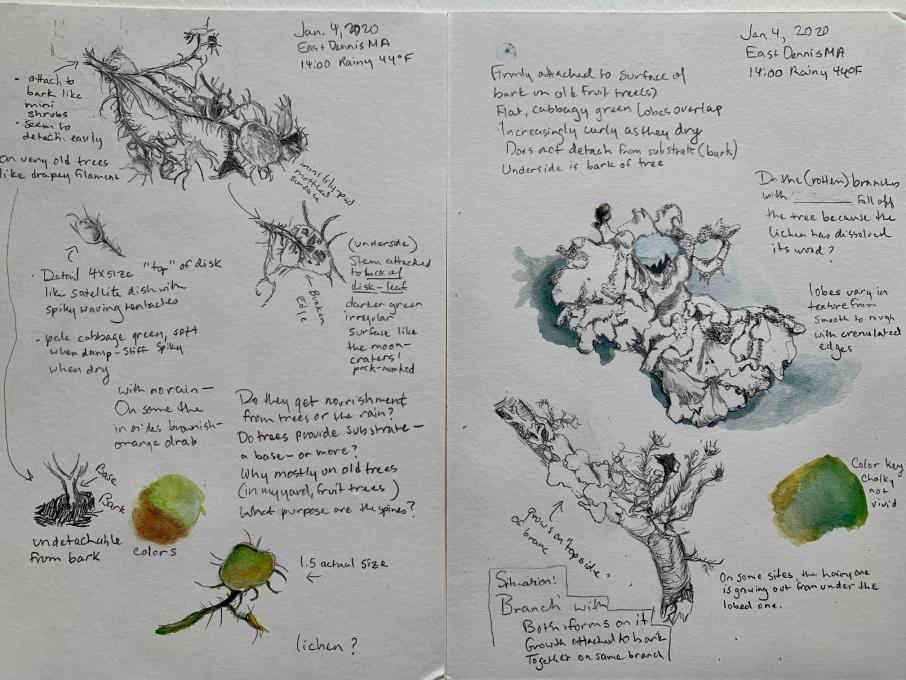 is Usnea "old man's beard" and the flat, lobular is a Parmontrema) in the leaf litter on the ground and brought them inside, as it was impossible to sit outside in the freezing weather. Ended up using a magnifying glass to see exactly what was going on in detail. Challenges were the meticulous tiny details in which the different shading techniques we've learned came in very handy. But also I wanted to indicate the color and couldn't quite capture the chalky quality of their color.
is Usnea "old man's beard" and the flat, lobular is a Parmontrema) in the leaf litter on the ground and brought them inside, as it was impossible to sit outside in the freezing weather. Ended up using a magnifying glass to see exactly what was going on in detail. Challenges were the meticulous tiny details in which the different shading techniques we've learned came in very handy. But also I wanted to indicate the color and couldn't quite capture the chalky quality of their color. 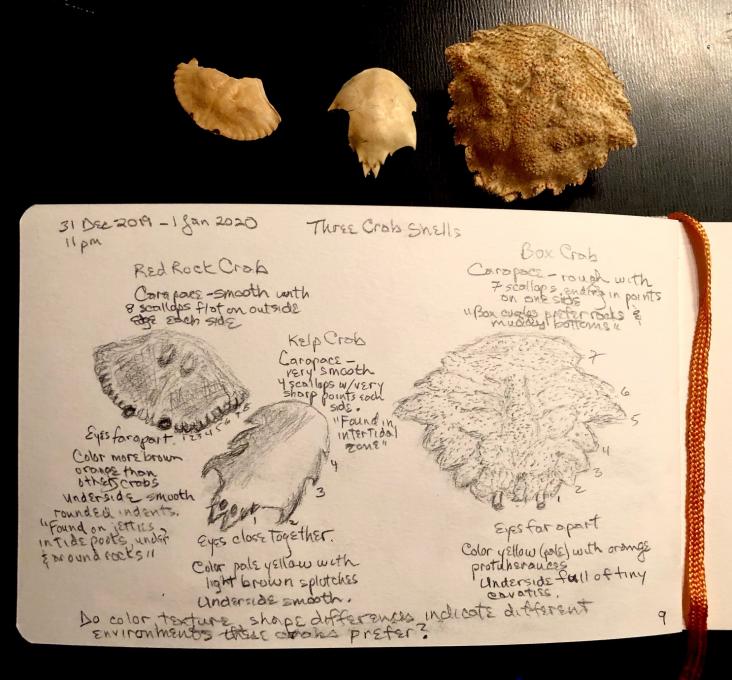







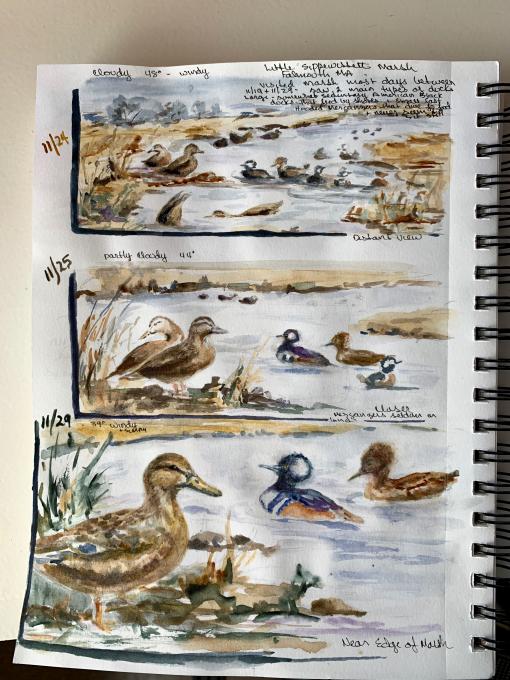 I can't imagine dealing with the watercolor set outside. Maybe with a little luck and experimentation I will figure it out by spring.
I am very much enjoying this course and seeing all of the beautiful and interesting work that the students are doing in their journals. It is eye-opening!
Edith
I can't imagine dealing with the watercolor set outside. Maybe with a little luck and experimentation I will figure it out by spring.
I am very much enjoying this course and seeing all of the beautiful and interesting work that the students are doing in their journals. It is eye-opening!
Edith 


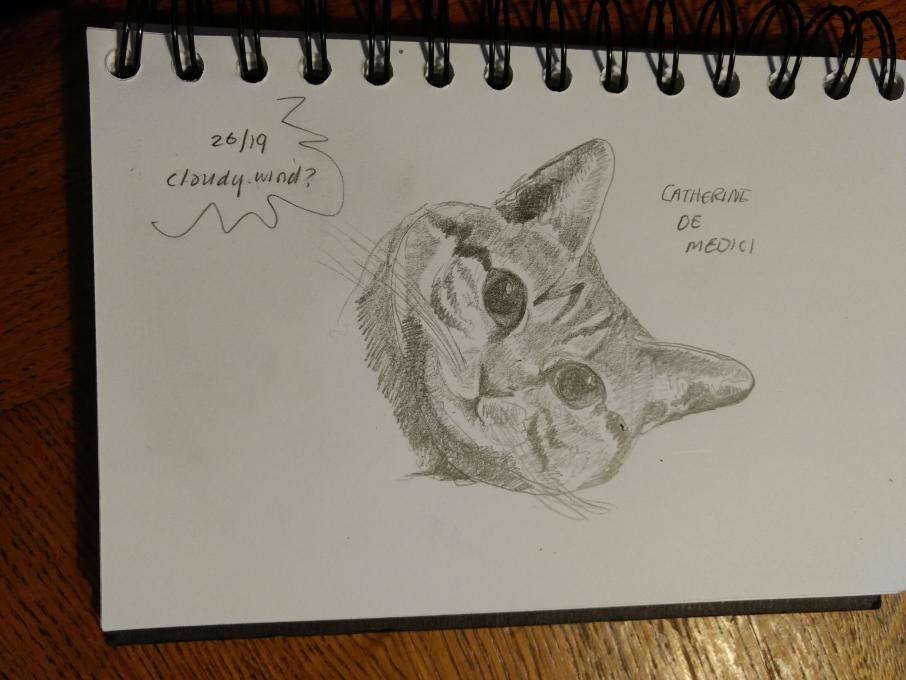
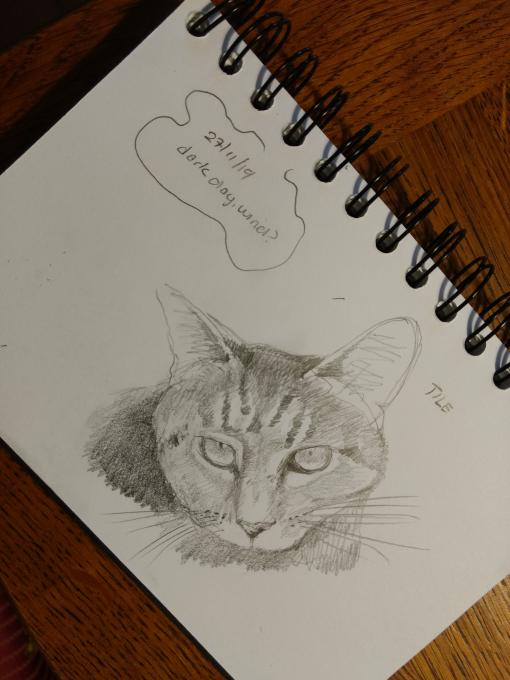 Comparison of our two cats: Catherine et Tile
Both were adopted from the SPA 3 years ago now.
Catherine is round with short legs. She has an amazing coat with swirls, dots, spots, and stripes. Apparently, swirls are a more recent adaptation in cat coats. Her legs are short and her tail is too thick and she chirps instead of meowing. She's obsessed with her food. She is very social and she's quite entertaining. She likes to live indoors, even though she has acess to outdoors when she wants through the cat door. Her coat is smooth with almost a lanolin like feeling. Hunting is not her idea of time well spent. She goes outside only when absolutely necessary or to be with us when we are out there. In the summer she enjoys survying her royaume from the wheelbarrow where she is off the ground and protected from all the scary things outside. She does chase insects and one year nearly destroyed my daphne by jumping into it to catch the butterflies that were visiting its flowers.
Tile is an outdoor cat. He has very long legs. When he runs; it's like watching a feather skipping along the ground. In the summer he only comes in to eat. He's a serious hunter. He often brings me the mice he's caught, his loud voice annoucing his prize before I see him. He has very long claws that are very sharpe. He defends our yard from other cats. He's very brave except when it comes to men. He does not trust them, and perfers to hide rather than meet them. When he first arrived he was very suspicious of everyone. Now he's much better. His coat is very soft with very fine hair that are longer than Catherine's. His markings are like ticking, more like a wild cat. His tail ends abruptly like it's been cut off. It is often bent at the end as if it has been broken.
I hope you can see in the sketches that they have very different morphology.
Comparison of our two cats: Catherine et Tile
Both were adopted from the SPA 3 years ago now.
Catherine is round with short legs. She has an amazing coat with swirls, dots, spots, and stripes. Apparently, swirls are a more recent adaptation in cat coats. Her legs are short and her tail is too thick and she chirps instead of meowing. She's obsessed with her food. She is very social and she's quite entertaining. She likes to live indoors, even though she has acess to outdoors when she wants through the cat door. Her coat is smooth with almost a lanolin like feeling. Hunting is not her idea of time well spent. She goes outside only when absolutely necessary or to be with us when we are out there. In the summer she enjoys survying her royaume from the wheelbarrow where she is off the ground and protected from all the scary things outside. She does chase insects and one year nearly destroyed my daphne by jumping into it to catch the butterflies that were visiting its flowers.
Tile is an outdoor cat. He has very long legs. When he runs; it's like watching a feather skipping along the ground. In the summer he only comes in to eat. He's a serious hunter. He often brings me the mice he's caught, his loud voice annoucing his prize before I see him. He has very long claws that are very sharpe. He defends our yard from other cats. He's very brave except when it comes to men. He does not trust them, and perfers to hide rather than meet them. When he first arrived he was very suspicious of everyone. Now he's much better. His coat is very soft with very fine hair that are longer than Catherine's. His markings are like ticking, more like a wild cat. His tail ends abruptly like it's been cut off. It is often bent at the end as if it has been broken.
I hope you can see in the sketches that they have very different morphology.
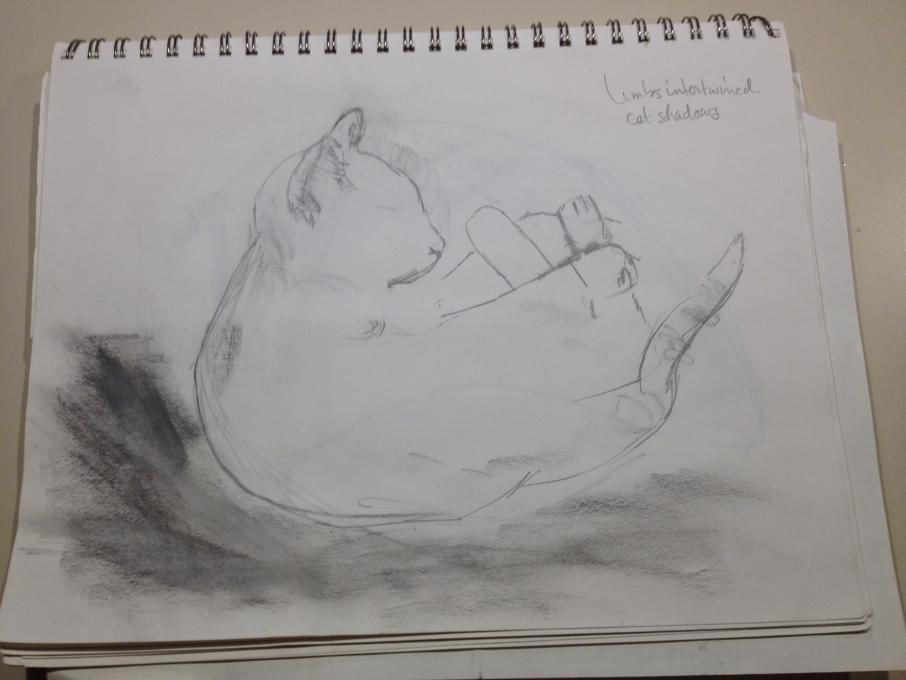
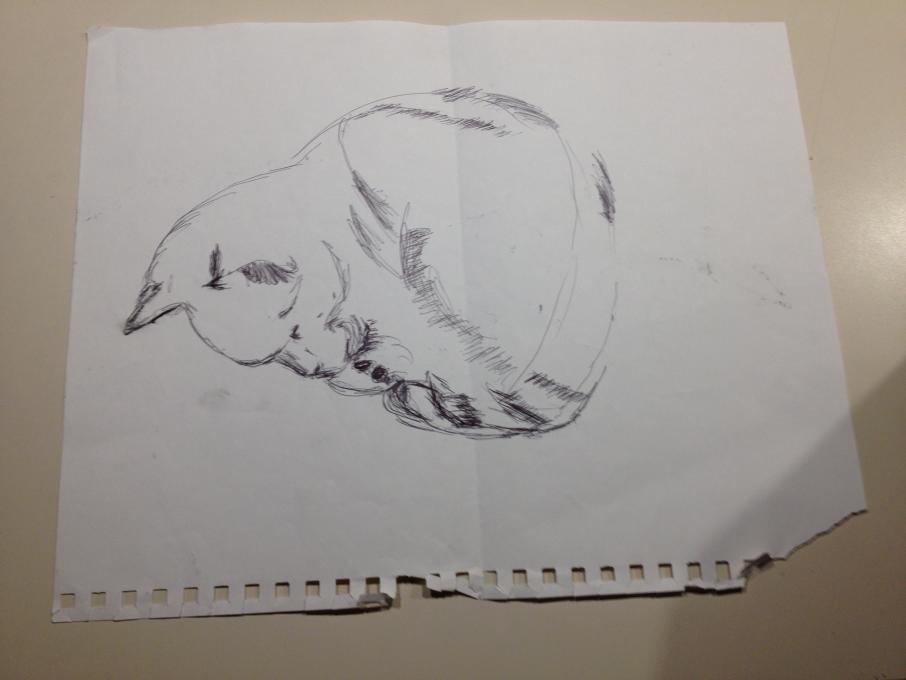
 I did a comparison of winter buds from three different trees: oak, cottonwood, and sweetgum. I was actually surprised with the differences I observed, and am starting to get into the habit of asking questions about nature differences in general. For my journal, I actually prefer drawings over words, but did find the process of thinking about questions helped me to differentiate the buds in the drawings.
I did a comparison of winter buds from three different trees: oak, cottonwood, and sweetgum. I was actually surprised with the differences I observed, and am starting to get into the habit of asking questions about nature differences in general. For my journal, I actually prefer drawings over words, but did find the process of thinking about questions helped me to differentiate the buds in the drawings. 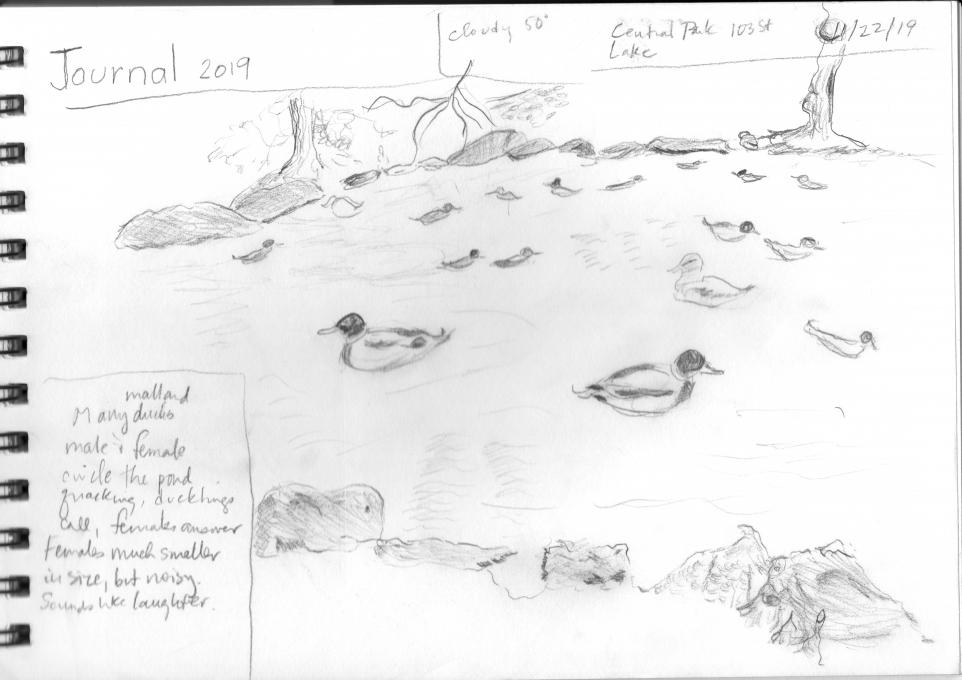
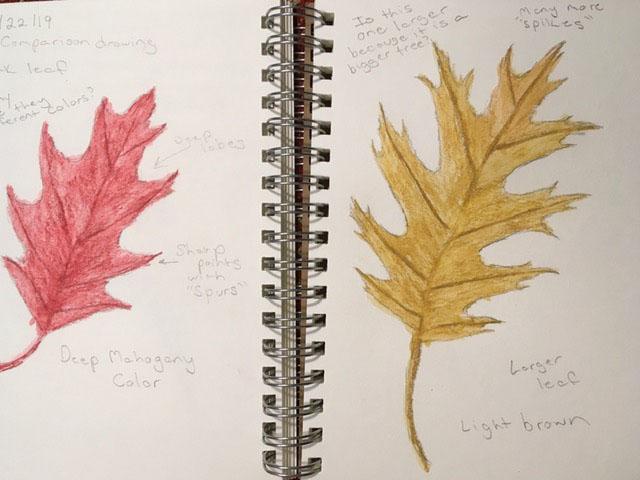

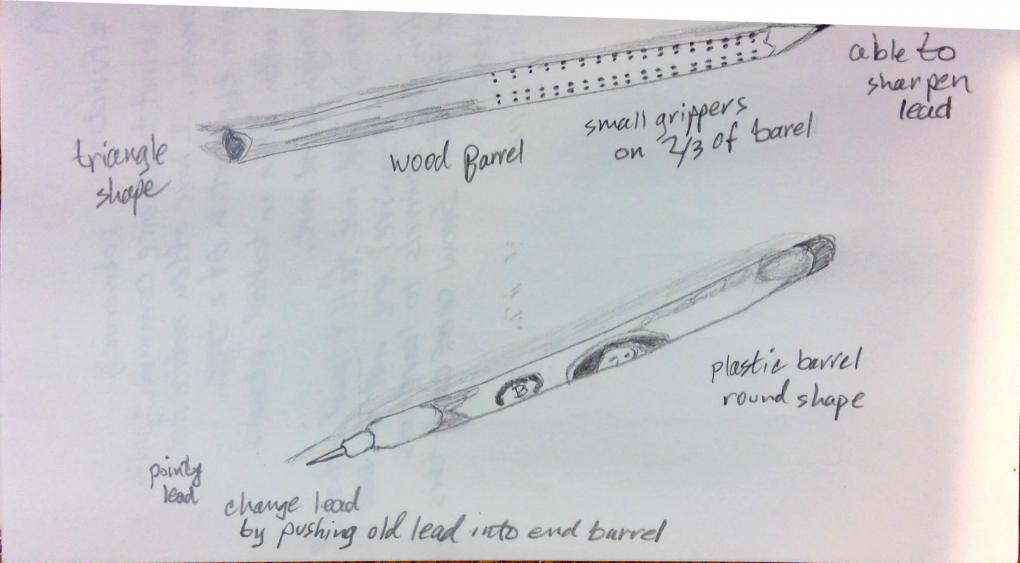
 I enjoy the comparison technique, need to go outside when the sun comes out.
I enjoy the comparison technique, need to go outside when the sun comes out.

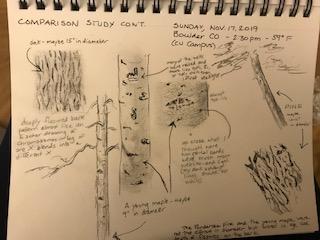 Here I'm comparing the bark of three trees--an oak (about 15" in diameter), a young maple (about 9" in diameter), and a Ponderosa pine (also about 9-10" in diameter but older than the maple and much, much more deeply fissured). Surprising to me was that the vertical-ish lines of the oak and pine had much more horizonal-ish hatching up close and the almost horizontal rings of the maple had much more vertical and web-like lines (very light, almost white) upon closer look. The oak bark reminded me of an Escher drawing--as if each "leg" of various "chromosome-shaped X's" blended into the next "X." This beautiful bark was much more challenging than I expected to draw! A process aside: I'm going to have to shift from pencil--all my pages are getting uniformly smudy!
Here I'm comparing the bark of three trees--an oak (about 15" in diameter), a young maple (about 9" in diameter), and a Ponderosa pine (also about 9-10" in diameter but older than the maple and much, much more deeply fissured). Surprising to me was that the vertical-ish lines of the oak and pine had much more horizonal-ish hatching up close and the almost horizontal rings of the maple had much more vertical and web-like lines (very light, almost white) upon closer look. The oak bark reminded me of an Escher drawing--as if each "leg" of various "chromosome-shaped X's" blended into the next "X." This beautiful bark was much more challenging than I expected to draw! A process aside: I'm going to have to shift from pencil--all my pages are getting uniformly smudy! 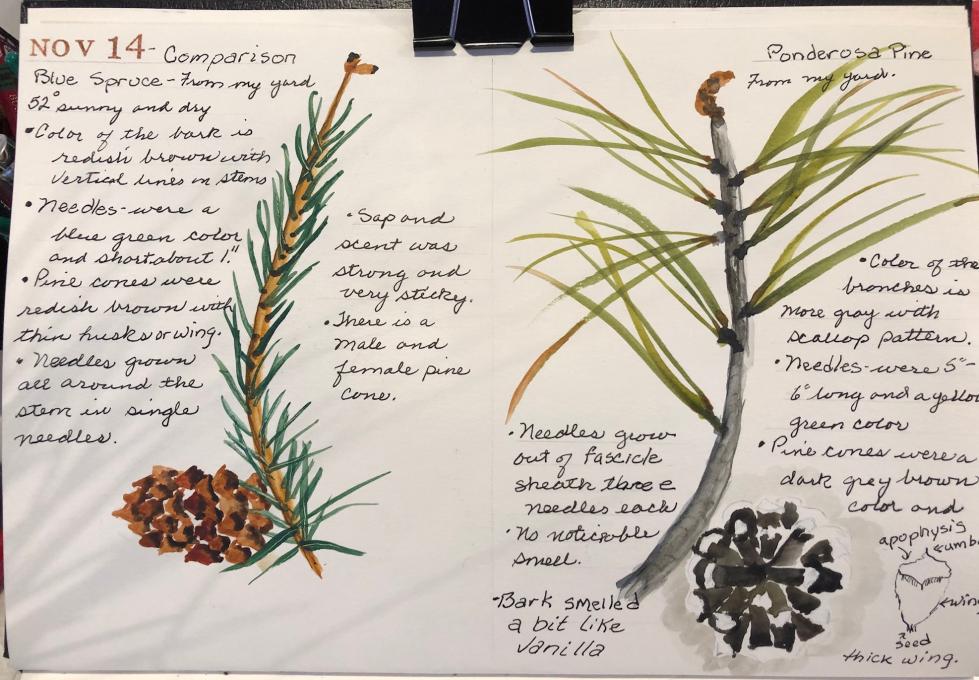
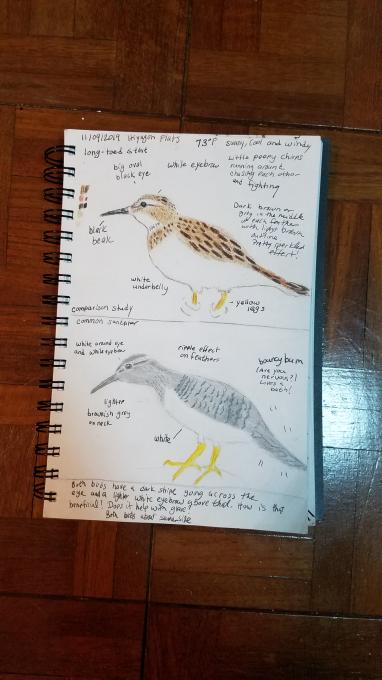 I set out to do a comparison study not knowing what I would find. Comparing these two similar birds got me thinking why the markings around their eyes are similar and how it is beneficial to them. I think when it comes to balancing writing, drawing and recording numerical data, my particular style will develop over time. As for now, I concentrate on the illustration and make comments and markings as I go.
I set out to do a comparison study not knowing what I would find. Comparing these two similar birds got me thinking why the markings around their eyes are similar and how it is beneficial to them. I think when it comes to balancing writing, drawing and recording numerical data, my particular style will develop over time. As for now, I concentrate on the illustration and make comments and markings as I go. 